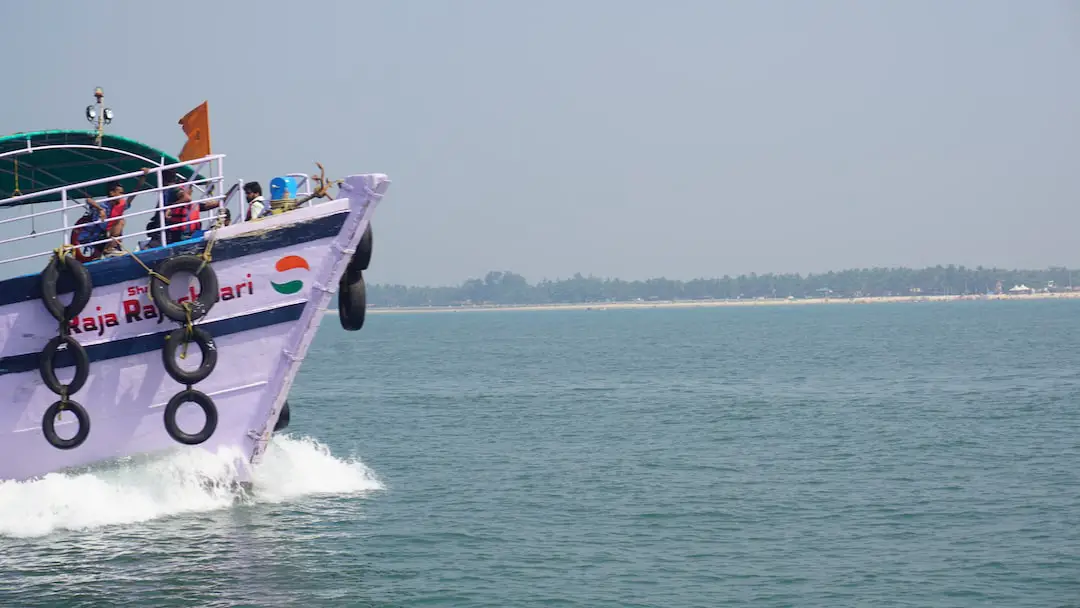Support our hydrofoil educational content for free when you purchase through links on our site. Learn more
Boat Hydrofoil Pros and Cons [2024]
Have you ever wondered what it would be like to glide effortlessly over the water, defying gravity and experiencing a smooth, exhilarating ride? Well, that’s exactly what hydrofoiling offers. Hydrofoils are fitted with underwater wings that lift the boat above the water, reducing drag and allowing it to “fly” over the surface. In this article, we’ll explore the pros and cons of boat hydrofoils, giving you a comprehensive understanding of this exciting technology.
Table of Contents
- Quick Answer
- Quick Tips and Facts
- Background: The Evolution of Boat Hydrofoils
- Types of Boat Hydrofoils
- Benefits of Boat Hydrofoils
- Drawbacks of Boat Hydrofoils
- In The Real World: Applications of Boat Hydrofoils
- Conclusion
- Recommended Links
- Reference Links
Quick Answer
Boat hydrofoils offer a thrilling and efficient way to travel on water. By lifting the boat above the surface, hydrofoils reduce drag, increase speed, and provide a smoother ride. However, they require a certain minimum speed to lift out of the water and can be more expensive to produce and maintain. Despite these drawbacks, hydrofoils have found applications in racing sailing vessels, personal speedboats, foil surfboards, and commercial ferries.
- Hydrofoils reduce hydrodynamic drag by lifting the boat above the water.
- They require a minimum speed to lift out of the water and start foiling.
- Hydrofoils offer increased speed, fuel efficiency, and a smoother ride.
- The design and construction of hydrofoils can be intricate and costly.
- Hydrofoils can be damaged by striking debris and have higher drag at low speeds.
- They are used in various marine applications, including racing, personal watercraft, and commercial transportation.
Background: The Evolution of Boat Hydrofoils

Boat hydrofoils have a fascinating history that dates back to the early 20th century. The concept of using wings underwater to lift a boat and reduce drag was first explored by Italian engineer Enrico Forlanini in the early 1900s. Since then, hydrofoil technology has evolved and found applications in various marine industries.
Types of Boat Hydrofoils
Boat hydrofoils come in different designs, each with its own advantages and characteristics. Let’s take a closer look at the two main types:
-
Surface-Piercing Hydrofoils: These hydrofoils have a portion of their wings submerged in the water while the rest remains above the surface. This design offers inherent stability in pitch and roll, making it suitable for high-speed applications. Surface-piercing hydrofoils are commonly used in racing sailing vessels and personal speedboats.
-
Fully-Submerged Hydrofoils: In contrast to surface-piercing hydrofoils, fully-submerged hydrofoils have their wings completely submerged underwater. This design relies on automatic systems for stability and control. Fully-submerged hydrofoils are often used in commercial ferries and other applications where stability and passenger comfort are paramount.
Benefits of Boat Hydrofoils
Boat hydrofoils offer a range of benefits that make them an attractive choice for water enthusiasts. Here are some of the key advantages:
-
Increased Speed: By reducing drag, hydrofoils allow boats to achieve higher speeds compared to traditional hull designs. This makes them ideal for racing and high-performance applications.
-
Improved Fuel Efficiency: The reduced drag experienced by hydrofoils translates into improved fuel efficiency. With less resistance from the water, boats equipped with hydrofoils can cover longer distances using less fuel.
-
Smooth Ride: Hydrofoils provide a smoother ride by gliding over waves and choppy water. The lifted position of the boat minimizes the impact of rough conditions, resulting in a more comfortable experience for passengers.
-
Enhanced Maneuverability: Hydrofoils offer improved maneuverability, allowing boats to make sharper turns and navigate tight spaces with ease. This makes them particularly useful in crowded waterways or when docking.
-
Reduced Environmental Impact: The increased efficiency of hydrofoils leads to reduced fuel consumption and lower emissions. This makes them a more environmentally friendly option compared to traditional boats.
Drawbacks of Boat Hydrofoils
While boat hydrofoils offer numerous benefits, they also come with some drawbacks that need to be considered. Here are a few potential drawbacks:
-
Minimum Foiling Speed: Hydrofoils require a certain minimum speed to lift out of the water and start foiling. This means that at low speeds, hydrofoils may not provide the same benefits and can even experience increased drag.
-
Complex Design and Construction: The design and construction of hydrofoils can be intricate and require precision. This complexity can result in higher production costs and maintenance demands compared to traditional boats.
-
Vulnerability to Damage: Hydrofoils can be vulnerable to damage from striking debris in the water. The wings and other components of the hydrofoil system are exposed and can be easily damaged, requiring repairs or replacements.
-
Limited Use in Shallow Areas: Due to their design, hydrofoils may not be suitable for navigating shallow areas or waters with submerged obstacles. The depth required for hydrofoiling limits their use in certain locations.
In The Real World: Applications of Boat Hydrofoils
Boat hydrofoils have found applications in various marine industries. Here are some real-world examples:
-
Racing Sailing Vessels: Hydrofoils have revolutionized the world of sailing racing. Racing sailboats equipped with hydrofoils can achieve incredible speeds and outperform traditional sailboats.
-
Personal Speedboats: Hydrofoils are also used in personal speedboats, providing an exhilarating and efficient way to travel on the water. These boats offer a unique experience for water sports enthusiasts.
-
Foil Surfboards: Foil surfboards have gained popularity among surfers looking for a new challenge. By attaching a hydrofoil to a surfboard, riders can “fly” above the water, allowing for longer rides and access to previously inaccessible waves.
-
Commercial Ferries: Hydrofoils are used in commercial ferries to provide fast and efficient transportation. These ferries can carry passengers and vehicles, reducing travel times and improving connectivity between coastal areas.
Conclusion

Boat hydrofoils offer an exciting and efficient way to travel on water. By reducing drag and increasing speed, hydrofoils provide a smoother ride and improved fuel efficiency. However, they require a minimum speed to lift out of the water and can be more expensive to produce and maintain. Despite these drawbacks, hydrofoils have found applications in racing sailing vessels, personal speedboats, foil surfboards, and commercial ferries. If you’re looking for a thrilling and innovative way to experience the water, hydrofoiling is definitely worth exploring.
Recommended Links
- CHECK PRICE on:
- Shop Boat Hydrofoils on:
- Boat Hydrofoil Basics – Learn more about the fundamentals of boat hydrofoils. Hydrofoil Basics
- Hydrofoil Equipment Reviews – Read reviews and comparisons of different hydrofoil equipment. Hydrofoil Equipment Reviews
- Advanced Hydrofoiling Techniques – Explore advanced techniques and tips for hydrofoiling. Advanced Hydrofoiling Techniques
- Hydrofoil History – Dive into the history and evolution of hydrofoil technology. Hydrofoil History
- What are the Benefits of Hydrofoil Boats? 2024 – Discover the benefits of hydrofoil boats in more detail. What are the Benefits of Hydrofoil Boats? 2024



